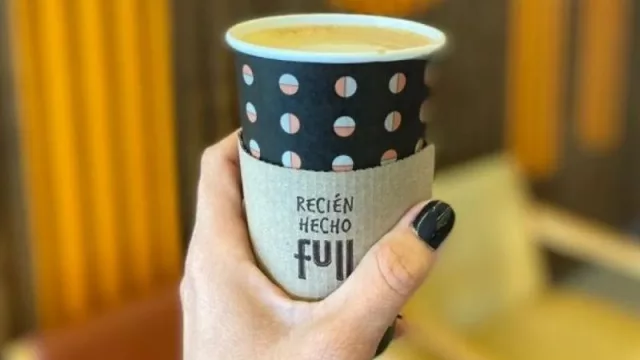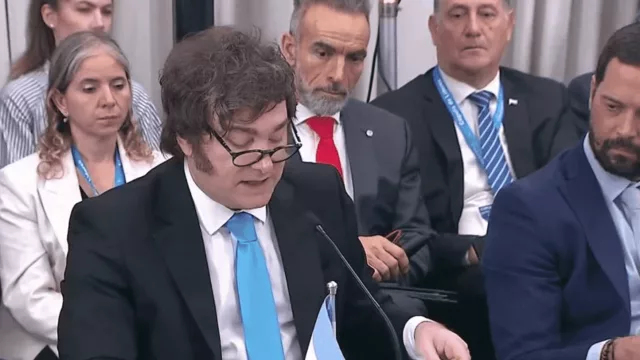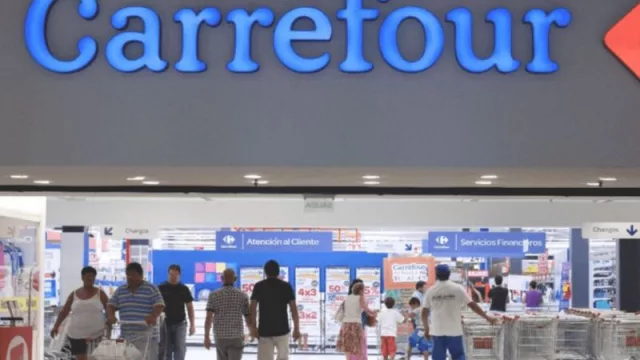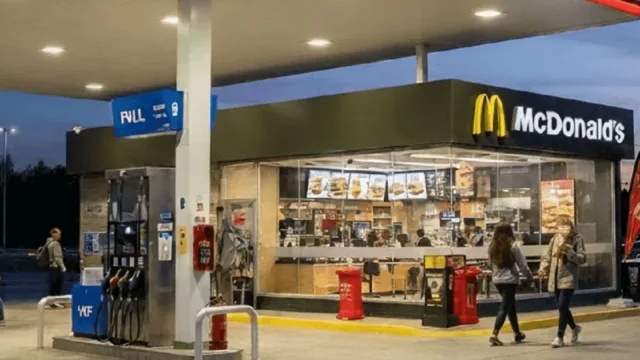-
How did an energy company turn its “alfajores” and burgers into direct competition for the world’s most iconic chains?
-
YPF: The Energy-and-Retail Revolution That Could Set a Global Benchmark (LATAM–Miami Case Study)
-
Under President Javier Milei, YPF has emerged as a corporate innovation beacon, reshaping operations with AI, real-time data, and a sharp command of local consumption. The model didn’t just boost business-unit profitability—it’s redefining standards for LATAM companies. Miami is already watching.
The Disruptive Play
-
Ultra-Convenience Expansion: YPF will roll out Seven-Eleven–style stores within stations, challenging coffeehouses, burger chains, and Argentina’s traditional kioscos (small, saturated formats with limited experience).
-
Reinventing Proximity: Logistics tech, cost optimization, and new layouts to deliver competitive pricing—laying the groundwork for the next stage in local retail (as seen in Mexico and Brazil).
Keys to Winning
-
Experiences Beyond Products: YPF is leading in South America by prioritizing real customer experience and layering emotional value into every interaction.
-
The Themed-Retail Opening: While Argentina excels in gastronomy and retail (Buenos Aires/Mendoza are global icons), much of the interior still lags in format and development. The country is ripe for an explosion of experiential stores: themed, playful spaces—autos, fútbol, gaming, exclusive boutiques.
Global Outlook
-
Argentina as a Trend Lab: With one of the world’s highest per-capita densities of cafés and bakeries, YPF’s dominance provides universal lessons.
-
Aggressive Future: A mix of operational tech and phygital experiences (physical + digital) could position YPF as the benchmark in energy-retail reinvention.
Why This Is a Revolution
-
This isn’t just fuel or snacks. It’s ecosystem design—turning gas stations into destinations, now expanding with cafés and convenience concepts.
-
Get ready: YPF is poised to become a must-study case for anyone aiming to lead in hypercompetitive markets with demanding audiences.
A recent Infonegocios Miami comparison: OXXO’s offensive:
-
See here:
Quick Hits (Micro Note IN Miami)
-
Coffee dominance: YPF Full sold 97,700 coffees per day in 2025, beating McDonald’s (82,000) and Starbucks (45,000) in Argentina (Scentia Group).
-
Phygital strategy: Its Real Time Intelligence Center (RTIC) analyzes 1 million daily transactions to personalize offers.
-
Exponential growth: In-store sales up 15% in 2025; profitability doubled vs. 2024.
-
Aggressive expansion: Standalone pilots in Buenos Aires; if successful, expect head-to-head on prime avenues with Havanna, Atalaya, and Starbucks.
-
Killer data: In-store AI cameras track age mix, traffic, and satisfaction in real time.
The Full Formula: When Fuel Powers Retail
From Pump to Café: Reinventing an Energy Giant
YPF isn’t just selling gas—it’s selling experiences. With 1,114 Full stores across 1,680 stations, it turned transactional spaces into consumption destinations. Think Shell Select’s European success—but with Argentine flavor: while Shell leans snacks, YPF doubled down on premium coffee (four varieties) and local fast fare (medialunas, alfajores).
AI as Competitive Edge
The RTIC—backed by USD $15 million—drives the engine:
-
Personalization: Offers by region. In Córdoba, 30% more local-style baked goods; in Mendoza, coffee + chocolate bundles.
-
Agility: Cuts low-margin SKUs and adds novelties every two weeks (vs. Starbucks’ ~6-month cycles).
-
Instant feedback: AI triages social/app feedback by urgency (e.g., “no medialunas at 8 a.m.”).
Numbers That Spook Global Franchises
-
Full alfajores: 2 million sold in 2025—outpacing Havanna on highway corridors.
-
Burgers: 4.5 million units—second only to McDonald’s. Margin: 22% vs. the U.S. chain’s 18% (Euromonitor).
-
Value equation: Full coffee at USD $1.50 vs. Starbucks latte at USD $4.50—3x higher profit due to leaner logistics.
Expanded Note: Lessons for Miami and LATAM
Convenience 3.0 Opportunity
-
Greater Miami—home to 2.5 million Hispanics—could replicate the model. Example: stations in Doral or Hialeah as food hubs with Cuban coffee and pastelitos powered by RTIC-like tech.
-
Data Is the New Fuel
As Santiago Bilinkis (Guide to Survive the Present) says, “whoever controls real-time consumption data will dominate retail.” YPF is doing it: 4.5M active app users generate 10TB of daily data.
-
Franchise vs. Owned
If YPF franchises (not yet confirmed), it could follow 7‑Eleven/OXXO with low expansion capex and royalty upside. Keeping operations in-house (Starbucks-style) would favor quality control.
Challenges
-
Brand perception: Will consumers accept premium food from an oil brand? In Argentina, 68% associate Full with “quality” (IPSOS).
-
International scale: Competing with OXXO (Mexico) and Tambo+ (Peru), which already run café-forward stations.
The future is expansion—experiences, categories, culture, crossing MKT—or bust
YPF Full shows industries must erase borders to survive. In Miami, where 40% of ventures shut down for lack of innovation (FL Chamber, 2025), this playbook urges a total rethink:
-
Which underused assets (gas stations, laundromats, pharmacies) could become the next Starbucks with AI? The answer may define LATAM’s next unicorn.
FAQs
-
Why is an oil company selling more coffee than Starbucks?
Answer: Location strategy (highways + urban), accessible pricing, and speed—73% choose Full for convenience (Wunderman Thompson study).
-
How can I use AI in retail without huge budgets?
Answer: Miami-based startups like Nexu offer camera + app analytics starting at USD $500/month.
Read Smart, Be Smarter!
Infonegocios NETWORK: 4.5 million Anglo-Latinos united by a passion for business.
Join us and stay informed:
Subscribe for free
Contact Infonegocios MIAMI:
-
marcelo.maurizio@gmail.com












Tu opinión enriquece este artículo: